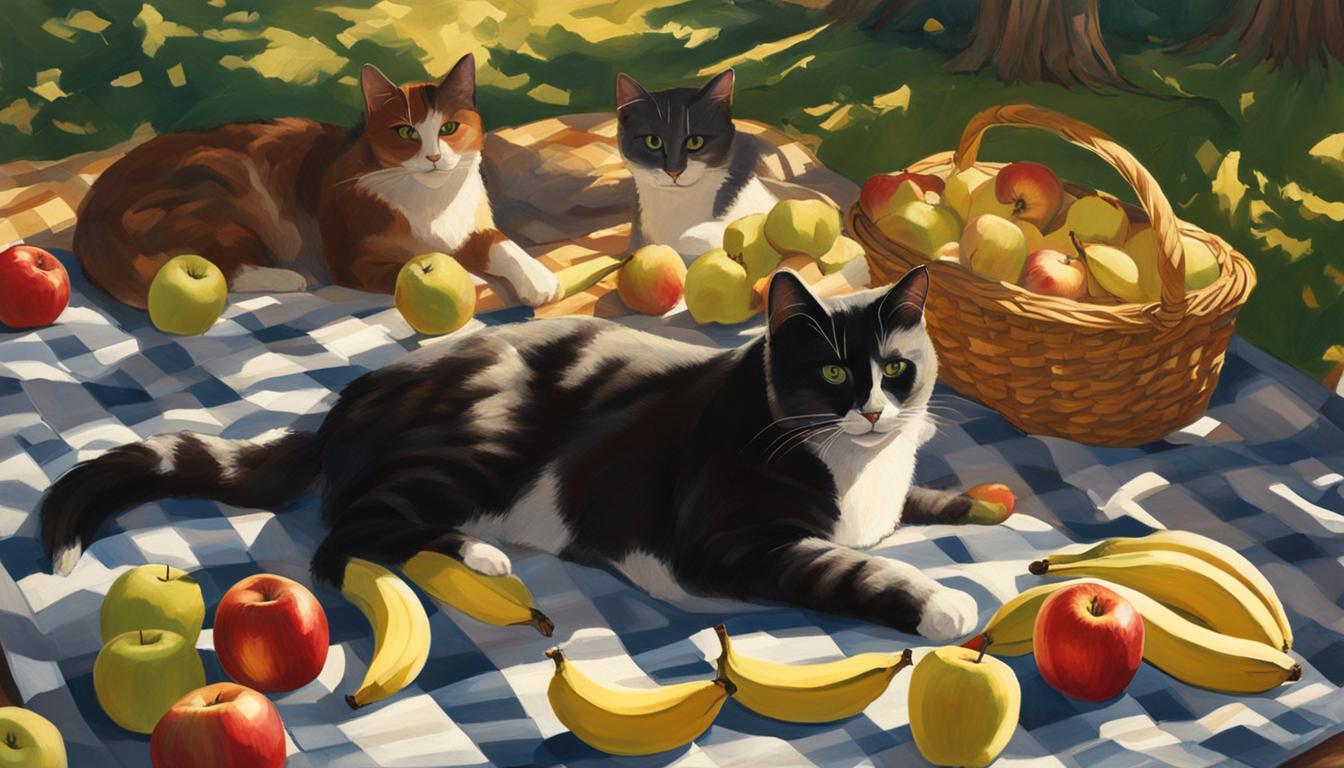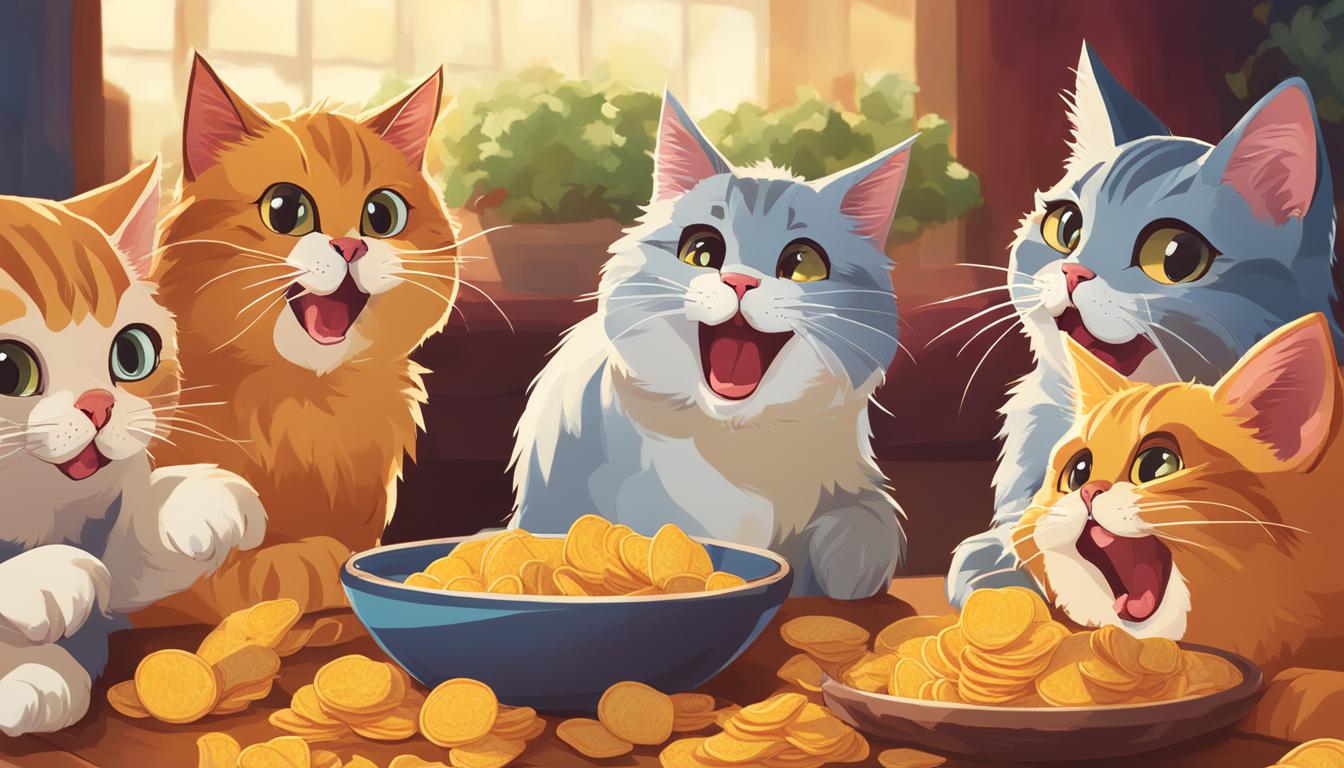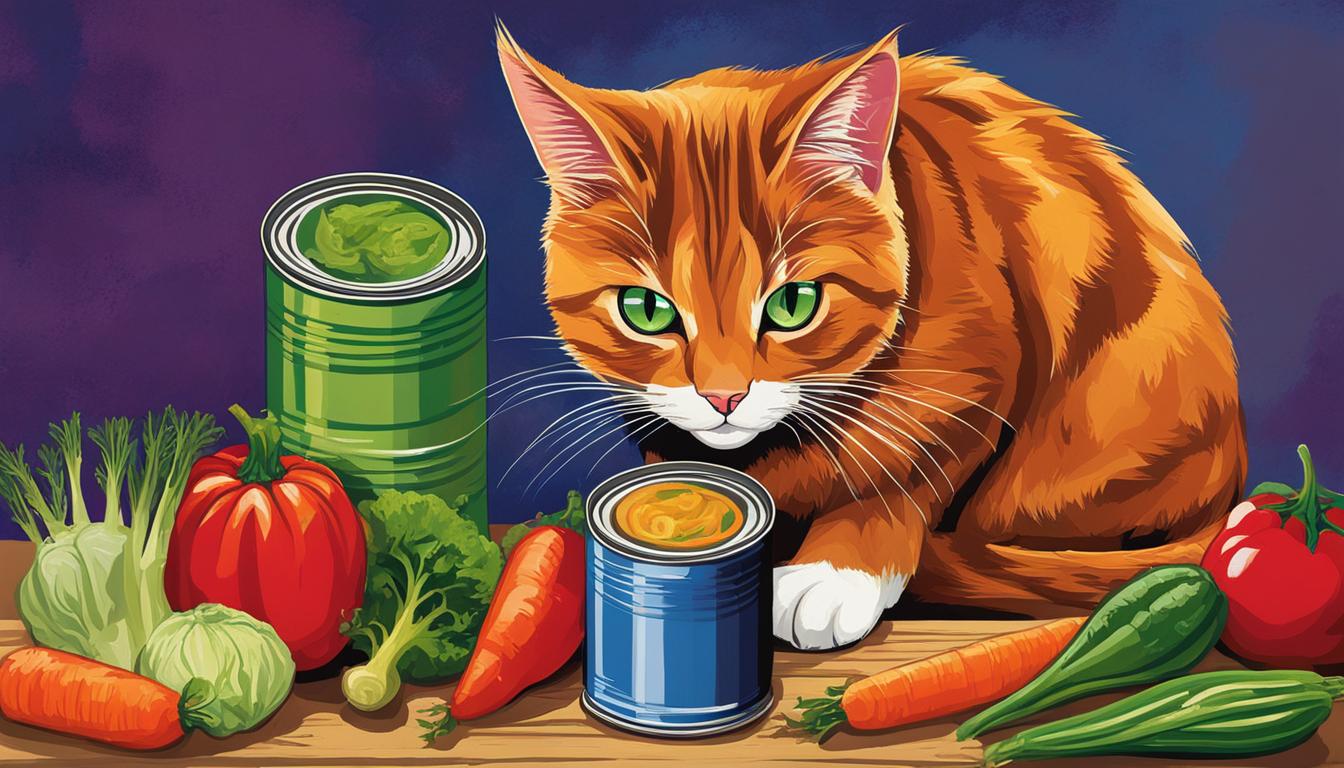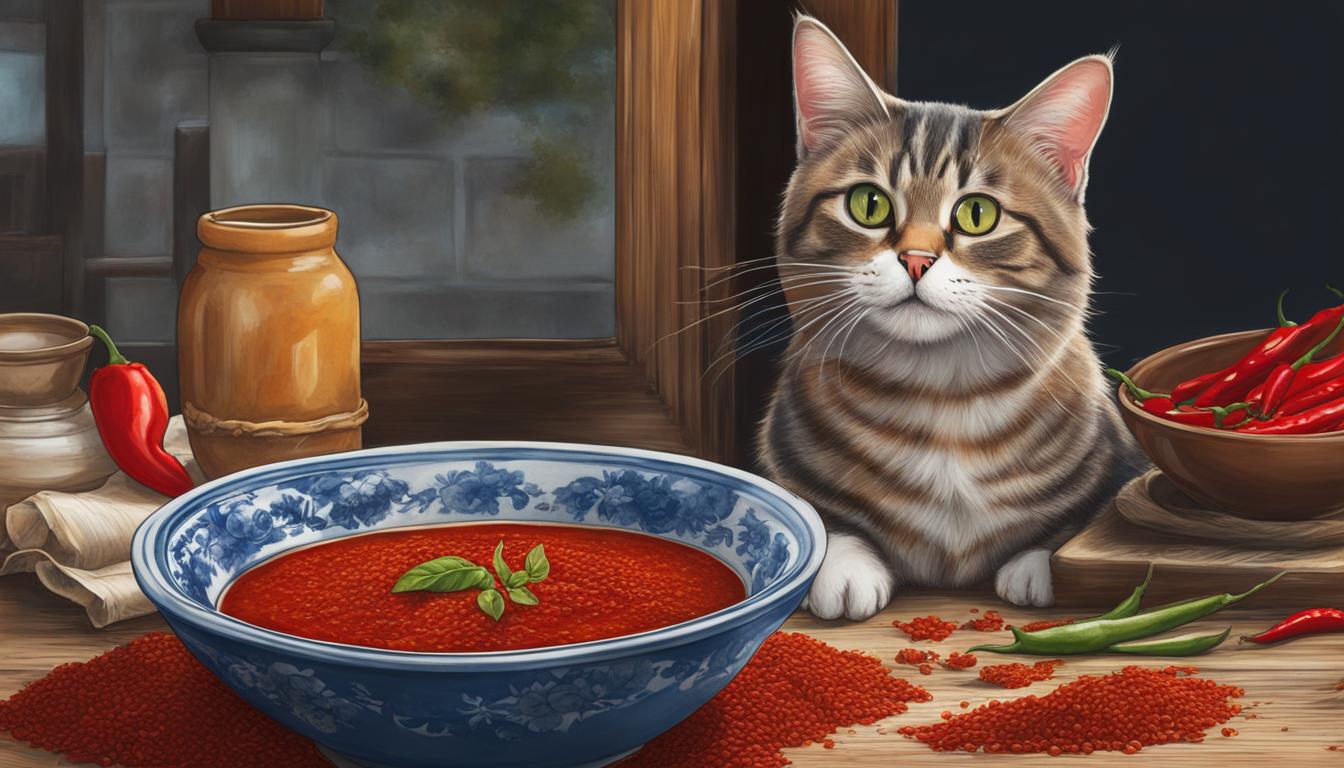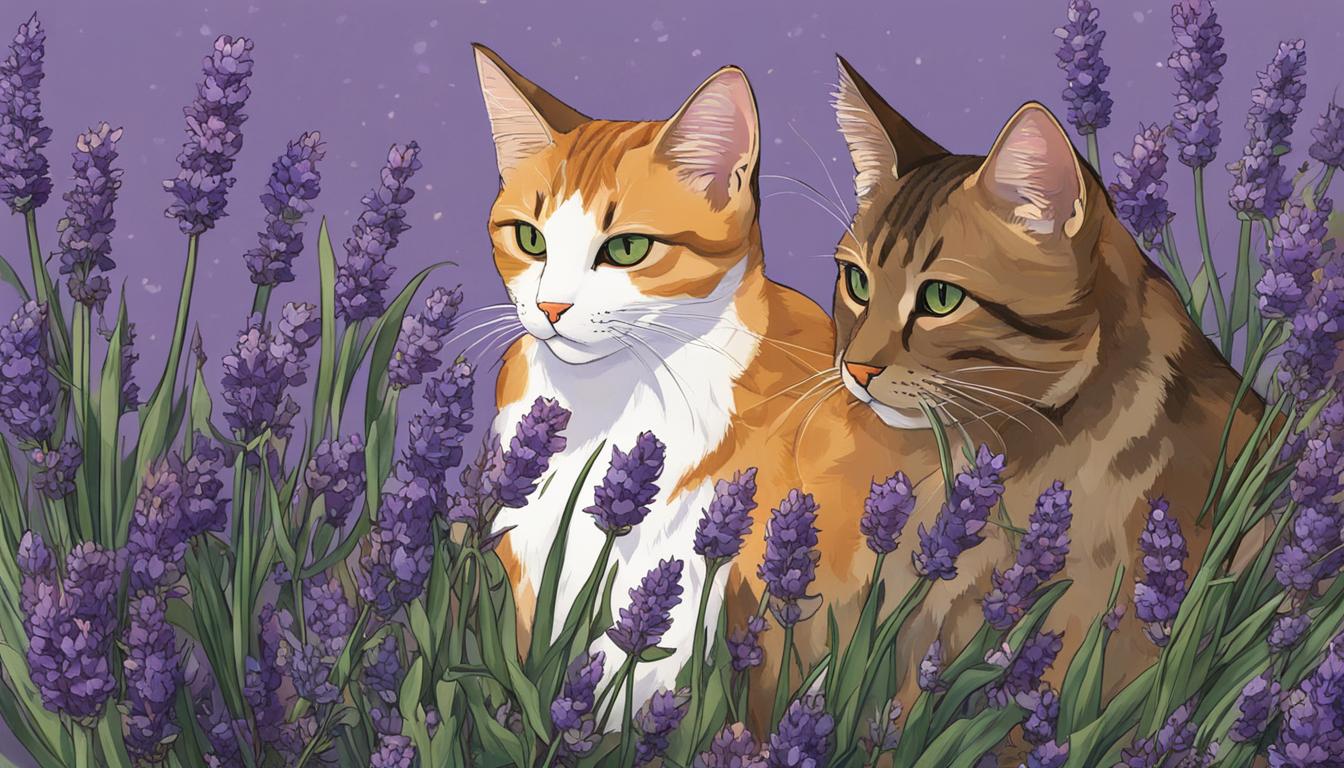As a cat owner, I’m always curious about what foods are safe and beneficial for my feline friend. Lately, I’ve been wondering if cats can enjoy the same fruits that I do, like apples and bananas. So, I did some digging to find out if these fruity treats are suitable for our whiskered companions.
Key Takeaways:
- Cats can eat apples and bananas in moderation.
- Apples provide calcium, vitamin C, vitamin K, and pectin, while bananas are a good source of vitamins B6 and C, potassium, and carbohydrates.
- Remove apple seeds and avoid giving cats dried apples.
- Sliced or cubed apples and fresh or frozen bananas can be offered as a special treat.
- Always consult with your veterinarian before making any changes to your cat’s diet.
Safe Fruits for Cats to Eat
Cats can enjoy a variety of fruits in moderation, offering them a tasty and nutritious addition to their diet. Here are some safe fruits for cats to enjoy:
- Watermelon: Remove the rind and seeds, and offer small bite-size portions.
- Strawberries: Remove the stems and leaves before sharing this sweet treat with your feline friend.
- Blueberries: Packed with antioxidants, these tiny berries are a healthy snack for cats.
- Raspberries: These delicious berries are safe for cats to eat, but make sure to remove any leaves.
- Cranberries: Cats can enjoy the tartness of cranberries, which are also beneficial for urinary health.
- Blackberries: Cut them into small pieces and remove any thorns before offering them to your cat.
- Mangos: Peel the skin and remove the seed, then offer small pieces of this tropical fruit.
- Pineapples: Remove the leaves, thorns, and rind, and offer small chunks of this juicy fruit.
- Cantaloupes: Remove the rind and offer small bite-size portions of this refreshing fruit.
These fruits are rich in vitamins, antioxidants, and fiber, providing a healthy boost to your cat’s diet. You can even get creative and incorporate these safe fruits into homemade cat treats or mix them into their regular food for added variety and nutritional benefits.
“Cats can enjoy a variety of fruits in moderation, offering them a tasty and nutritious addition to their diet.”
Table: Comparison of Safe Fruits for Cats
| Fruit | Preparation | Benefits |
|---|---|---|
| Watermelon | Remove rind and seeds | Refreshing, hydrating, and packed with vitamins A and C |
| Strawberries | Remove stems and leaves | High in antioxidants and vitamin C |
| Blueberries | Offer as is | Antioxidant-rich and beneficial for cognitive health |
| Raspberries | Remove leaves | High in fiber and vitamin C |
| Cranberries | Offer as is | Beneficial for urinary health and packed with antioxidants |
| Blackberries | Remove thorns | Rich in vitamins A and C |
| Mangos | Peel and remove seed | Loaded with vitamin A and fiber |
| Pineapples | Remove leaves, thorns, and rind | Rich in vitamin C and bromelain |
| Cantaloupes | Remove rind | Hydrating and a good source of vitamins A and C |
Remember to introduce new fruits gradually, monitor your cat’s reaction, and offer them in small quantities as occasional treats. Always consult with your veterinarian before making any changes to your cat’s diet, especially if you have any concerns or if your cat has specific dietary restrictions or medical conditions.

Fruits to Avoid Feeding Cats
When it comes to feeding fruits to your feline friend, it’s important to be aware of which fruits are safe and which ones should be avoided. While some fruits can provide nutritional benefits to cats, others can be harmful or even toxic to their health.
Fruits not safe for cats:
- Grapes and raisins: These fruits can cause kidney failure in cats.
- Lemons, limes, and oranges: The high acidity in these fruits can cause digestive issues.
- Green tomatoes: Unripe tomatoes contain solanine, a toxic compound that can affect the central nervous system.
In addition to these fruits, it’s crucial to avoid feeding cats apple seeds. Apple seeds contain cyanide, which is poisonous to cats if ingested. Always remove seeds, stems, pits/cores, and rinds before offering any fruits to your furry friend to ensure their safety.
| Fruits | Reasons to Avoid |
|---|---|
| Grapes and raisins | Potential kidney failure |
| Lemons, limes, and oranges | High acidity, digestive issues |
| Green tomatoes | Toxicity, central nervous system effects |
| Apple seeds | Cyanide poisoning |
As a responsible cat owner, it’s important to prioritize your cat’s health and well-being by avoiding feeding them these potentially harmful fruits. Stick to feeding them safe and cat-friendly fruits in moderation, and always consult your veterinarian if you have any questions or concerns about your cat’s diet.
Other Human Foods Safe for Cats
When it comes to feeding our feline friends, it’s important to know which human foods are safe for them to consume. While cats are obligate carnivores and their main diet should consist of meat-based cat food, there are some human foods that can be safely incorporated into their diet in moderation. These foods not only offer variety but also provide additional nutrients that can benefit their overall health.
Here are some safe human foods for cats:
- Artichokes: Rich in antioxidants and fiber
- Asparagus: Provides vitamins A, C, and K, as well as fiber
- Beans: Good source of protein and fiber
- Broccoli: Contains vitamins C and K, fiber, and antioxidants
- Cabbage: Offers vitamins C and K, as well as fiber
- Carrot: Rich in beta-carotene and fiber (cut into small bites)
- Cauliflower: Provides vitamins C and K, fiber, and antioxidants
- Celery: Contains vitamins A, C, and K, as well as fiber (cut into small bites)
- Coconut: Offers healthy fats and can improve digestion
- Eggplant: Rich in antioxidants and fiber
- Ginger: Can help with digestion and reduce inflammation
- Green beans: Good source of vitamins C and K, as well as fiber
- Lettuce: Provides hydration and some vitamins and minerals
- Olives: Contains healthy fats and antioxidants
- Peas: Rich in vitamins A, C, and K, as well as fiber
- Peppers: Offers vitamins A, C, and E, as well as antioxidants
- Pumpkin: Can aid in digestion and provide vitamins A and C (cooked or canned)
- Sweet potato: Rich in vitamins A and C, fiber, and antioxidants
- Winter squash: Provides vitamins A and C, fiber, and antioxidants
These human foods can be given as occasional treats or incorporated into your cat’s regular meals. However, it’s important to introduce new foods slowly and in small quantities to ensure your cat’s digestive system can handle them. Always consult with your veterinarian before making any significant changes to your cat’s diet.
| Food | Nutritional Benefits |
|---|---|
| Artichokes | Rich in antioxidants and fiber |
| Asparagus | Provides vitamins A, C, and K, as well as fiber |
| Beans | Good source of protein and fiber |
| Broccoli | Contains vitamins C and K, fiber, and antioxidants |
| Cabbage | Offers vitamins C and K, as well as fiber |
| Carrot | Rich in beta-carotene and fiber (cut into small bites) |
| Cauliflower | Provides vitamins C and K, fiber, and antioxidants |
| Celery | Contains vitamins A, C, and K, as well as fiber (cut into small bites) |
| Coconut | Offers healthy fats and can improve digestion |
| Eggplant | Rich in antioxidants and fiber |
| Ginger | Can help with digestion and reduce inflammation |
| Green beans | Good source of vitamins C and K, as well as fiber |
| Lettuce | Provides hydration and some vitamins and minerals |
| Olives | Contains healthy fats and antioxidants |
| Peas | Rich in vitamins A, C, and K, as well as fiber |
| Peppers | Offers vitamins A, C, and E, as well as antioxidants |
| Pumpkin | Can aid in digestion and provide vitamins A and C (cooked or canned) |
| Sweet potato | Rich in vitamins A and C, fiber, and antioxidants |
| Winter squash | Provides vitamins A and C, fiber, and antioxidants |
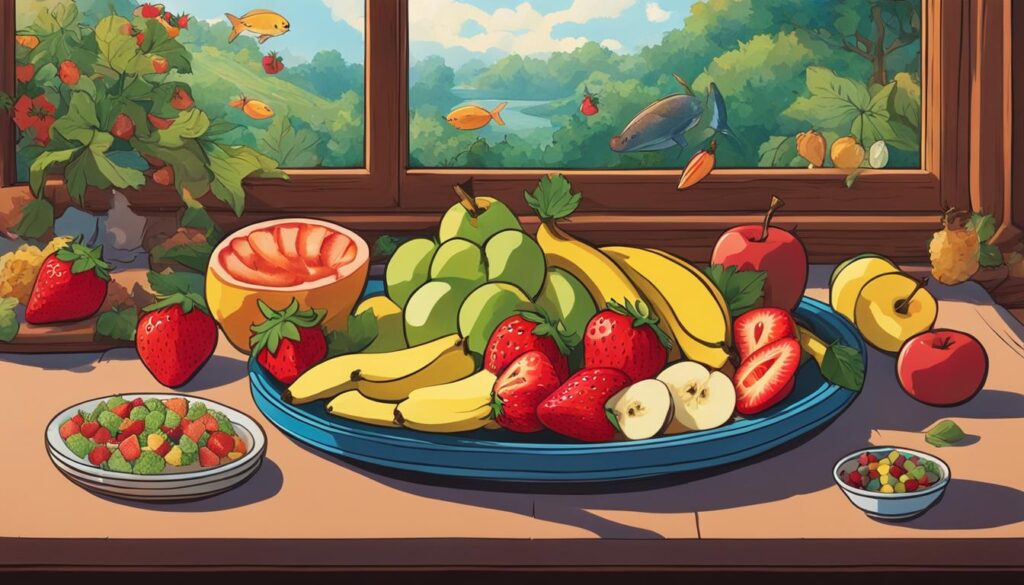
Foods Toxic for Cats
As much as we love to share food with our furry friends, it’s important to know that not all human foods are safe for cats. Some common foods can be toxic and harmful to their health. Here are the foods that cats should avoid:
- Chives
- Garlic
- Green tomatoes
- Leeks
- Wild mushrooms
- Onion
- Rhubarb
- Most seeds, stems, pits, rinds, and roots
These foods can cause digestive issues, toxicity, and adverse reactions in cats. It’s important to keep them away from your feline friend to ensure their well-being.
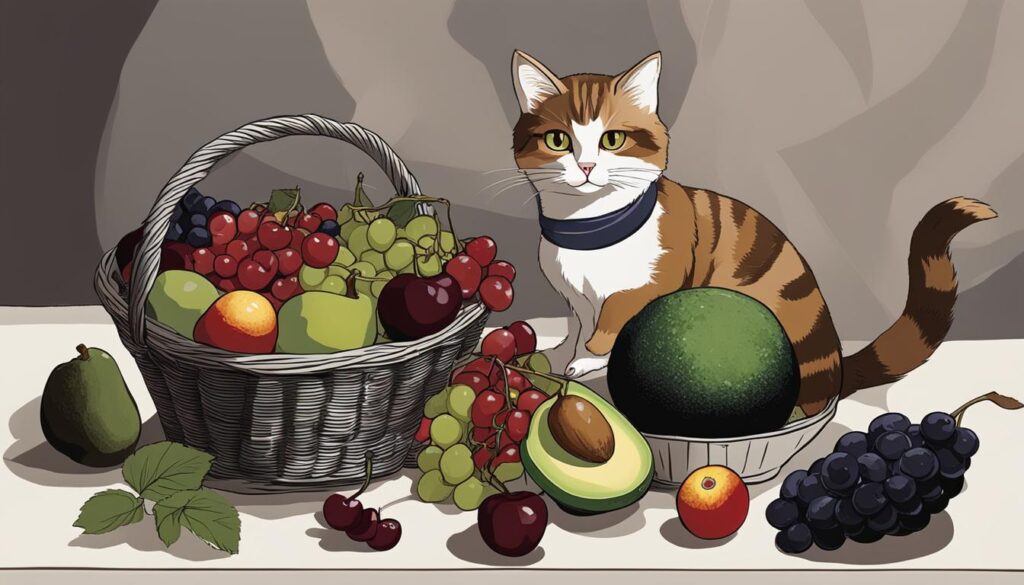
| Foods to Avoid | Potential Risks |
|---|---|
| Chives | Can cause anemia and digestive upset |
| Garlic | Contains compounds toxic to cats, leading to anemia and gastrointestinal upset |
| Green tomatoes | Contain solanine, a toxic substance that affects the central nervous system |
| Leeks | Contain compounds that can cause gastrointestinal upset and hemolytic anemia |
| Wild mushrooms | Can cause severe toxicity, liver damage, and gastrointestinal upset |
| Onion | Contains substances that can cause anemia and damage red blood cells |
| Rhubarb | Contains oxalic acid, which can be toxic to cats |
| Most seeds, stems, pits, rinds, and roots | Can pose choking hazards or contain toxins harmful to cats |
Cat Reactions to Different Fruits
When it comes to cats and fruits, their reactions can vary. While cats are carnivores and lack sweet taste receptors, some may still show interest in certain fruits due to their textures and smells. However, others may exhibit aversion or a lack of interest. It’s important to monitor your cat’s reaction to new fruits and offer them in small quantities as occasional treats.
Each cat is unique, and their preferences may differ. Some cats may enjoy the juicy sweetness of melons, while others may find the tartness of strawberries intriguing. The key is to introduce fruits gradually and observe how your cat responds. If they show enthusiasm or curiosity, it’s a positive sign. However, if they seem disinterested or avoid the fruit altogether, it’s best to respect their individual preferences and not force them to eat it.
I’ve found that my own cat, Felix, has a particular liking for watermelon. Whenever I enjoy a slice, he’ll come running and sniff around, hoping for a small piece. It’s fascinating to see how each cat can have unique preferences when it comes to fruits. So, if your feline friend shows an interest in certain fruits, it can be entertaining to offer them as an occasional treat and see how they react.

Quotes:
“I’ve found that my own cat, Felix, has a particular liking for watermelon. Whenever I enjoy a slice, he’ll come running and sniff around, hoping for a small piece.”
“It’s fascinating to see how each cat can have unique preferences when it comes to fruits.”
Summary:
- Cats’ reactions to fruits can vary, with some showing interest and others exhibiting aversion or disinterest.
- Individual cats may have unique preferences for specific fruits.
- Observing your cat’s reaction to new fruits and offering them in small quantities as treats is the best approach.
- Watermelon, in particular, seems to be a favorite among some cats.
Guidelines for Feeding Fruits to Cats
When it comes to feeding fruits to your feline friend, it’s important to follow some guidelines to ensure their safety and well-being. Here are some tips on how to feed fruits to cats:
Cutting fruits into small pieces
To make it easier for cats to consume fruits, it’s recommended to cut them into small, easily digestible pieces. This helps prevent choking and allows the cats to enjoy the fruits without any difficulty.
Removing potential hazards
Before offering fruits to your cat, make sure to remove any seeds, stems, pits, or rinds that may pose a choking hazard or contain toxins. These parts of the fruits can be harmful to cats and should be discarded.
Limiting fruit portions
Fruits should be given as occasional treats and should not make up a significant portion of your cat’s diet. It’s recommended to limit fruits and other treats to around 2% of your cat’s overall diet. This equates to about a 1-inch portion of fruit per day.
| Fruit | Recommended Portion |
|---|---|
| Apple (sliced or cubed) | 1-inch portion |
| Banana (fresh or frozen) | 1-inch portion |
| Watermelon (without rind or seeds) | 1-inch portion |
| Strawberries (stems and leaves removed) | 1-inch portion |
| Blueberries | 1-inch portion |
Table: Recommended fruit portions for cats.
It’s important to note that diabetic cats should not be given fruits due to the high sugar content. If you have any concerns or questions about feeding fruits to your cat, it’s always best to consult with your veterinarian for personalized advice.
By following these guidelines, you can safely incorporate fruits into your cat’s diet as a delightful and nutritious treat. Just remember to offer them in moderation, remove any potential hazards, and keep an eye on your cat’s overall health and well-being.
Conclusion
After exploring the topic of cats eating fruits, it’s clear that certain fruits like apples and bananas can be safely incorporated into a cat’s diet as an occasional treat. These fruits offer some nutritional benefits, such as vitamins and fiber, but they should not replace the main meat-based cat food.
When offering fruits to your cat, it’s important to do so in moderation and ensure that any potential hazards, such as seeds, stems, pits, or rinds, are removed. Cats may have varying preferences for fruits, with some showing interest in the textures and smells, while others may display indifference due to their carnivorous nature.
It’s crucial to monitor your cat’s reaction to new fruits and introduce them gradually. Remember to consult with your veterinarian before making any changes to your cat’s diet, especially if your cat has any specific dietary requirements or health conditions.
In conclusion, while cats can enjoy certain fruits, it’s imperative to offer them responsibly and in line with their individual needs. By following these guidelines and prioritizing your cat’s well-being, you can safely incorporate fruits into their diet and provide them with a flavorful and varied treat.
FAQ
Can cats eat apples and bananas?
Yes, cats can eat apples and bananas in moderation.
What are the nutritional benefits of apples for cats?
Apples provide calcium, vitamin C, vitamin K, and pectin to cats.
Can I give my cat dried apples?
It’s best to avoid giving cats dried apples and instead offer sliced or cubed fresh apples.
Are watermelon, strawberries, blueberries, and raspberries safe for cats to eat?
Yes, these fruits are safe for cats to eat, but make sure to remove rinds, seeds, stems, and leaves.
Can cats eat grapes, raisins, lemons, and limes?
No, these fruits can cause digestive issues, toxicity, or central nervous system depression in cats.
Why should apple seeds be avoided?
Apple seeds contain cyanide, which is poisonous to cats.
What other human foods can cats safely consume?
Other safe human foods for cats include artichokes, beans, broccoli, carrots, coconut, peas, and more.
Are onions, garlic, and mushrooms toxic for cats?
Yes, these foods are toxic and should be kept away from cats.
Do cats like fruit?
Cats may vary in their preferences for different fruits, but some may enjoy the textures and smells.
How should I feed fruits to my cat?
Cut fruits into small, easily digestible pieces and remove any potential hazards before offering them to your cat.
What’s the recommended portion of fruits for cats?
Limit fruits and other treats to 2% of your cat’s diet, which is about a 1-inch portion each day.
Can diabetic cats eat fruit?
Diabetic cats should not be given fruit due to the high sugar content.
Should I consult my veterinarian before feeding fruits to my cat?
Yes, it’s always recommended to consult with your veterinarian before making any changes to your cat’s diet.

